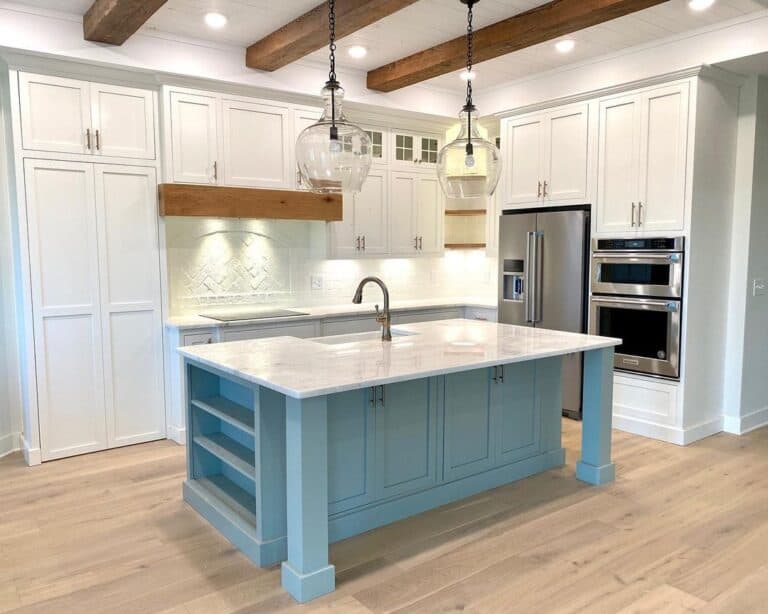Rely on Specialist Workmanship for Tailored Legs For Kitchen Island Concepts
Rely on Specialist Workmanship for Tailored Legs For Kitchen Island Concepts
Blog Article
Essential Variables to Take Into Consideration When Picking Legs For Cooking Area Island
Choosing the proper legs for a kitchen island entails a careful evaluation of several elements that can dramatically influence both functionality and aesthetic appeal. As we check out these components, it comes to be clear that each choice can have far-ranging implications for the general cooking area experience.
Product Options
When picking legs for a cooking area island, understanding the various material options is important for achieving both aesthetic allure and structural honesty (Legs For Kitchen Island). The option of product significantly affects not just the toughness of the island however also its overall design and performance
Timber is a prominent selection, supplying heat and convenience. Solid hardwoods, such as oak or maple, offer strength and can be discolored or painted to match the kitchen decor. Metal legs, commonly made from stainless-steel or functioned iron, contribute a commercial and contemporary feeling while making certain sturdiness and security. These products are resistant to use and can support considerable weight, making them ideal for bigger islands.
Another choice is crafted products, like MDF or plywood, which can be extra affordable while still using a series of finishes. Nevertheless, they may not provide the same degree of security as strong wood or steel. Lastly, products such as acrylic or glass can produce a contemporary appearance, though they may call for extra support to ensure stability.
Ultimately, the choice of material for kitchen area island legs need to align with the desired capability and the overall theme of the cooking area.
Design and Layout

When taking into consideration design, the form and surface of the legs are vital. Conical legs can offer a sense of lightness and beauty, while thicker, a lot more robust legs can communicate toughness and stability. Additionally, the finish-- be it painted, stained, or natural-- must complement the kitchen cabinetry and countertop materials to produce a unified look.
Furthermore, the layout of the legs can likewise mirror personal preference. Customized or ornamental legs, such as those including complex makings or distinct geometric shapes, can work as centerpieces, including character and personality to the kitchen area. Eventually, the right option will not only enhance functionality but additionally elevate the visual allure, making the kitchen island a standout feature of the home.
Elevation Factors To Consider
Choosing the suitable height for kitchen area island legs is crucial, as it straight affects both capability and convenience. The standard height for a kitchen island normally varies from 36 to 42 inches, straightening with usual kitchen counter heights.

It is additionally vital to account for individuals' choices and elevations. Personalizing the height can guarantee a moved here comfy experience for all household participants, making the kitchen island an extra enjoyable and practical room.
Weight Assistance
Making certain ample weight assistance for cooking area island legs is important for both security and functionality. The kitchen island usually serves numerous functions, consisting of food prep work, dining, and added storage space, demanding a robust assistance structure. When choosing legs, it is essential to think about the general weight ability called for based upon the island's planned use and the materials that will be placed on it.
The selection of product for the legs plays a considerable duty in their weight-bearing capacities. Strong timber, steel, and heavy-duty composites usually offer exceptional strength compared to lighter materials. Additionally, the layout of the legs-- whether they are straight, tapered, or have Get the facts a pedestal type-- can influence their ability to disperse weight successfully throughout the structure.
Constantly seek advice from the supplier's requirements relating to lots limitations to ensure that the legs can maintain the intended weight without endangering safety. In recap, selecting kitchen island legs with ample weight support is necessary for creating a practical and risk-free cooking space.
Installation and Upkeep
Correct installment and maintenance of kitchen area island legs are essential for guaranteeing long life and stability. To begin, it is necessary to follow the supplier's guidelines during installment. This often involves securing go now the legs to the space station using suitable bolts, making sure that the legs are degree and lined up. Utilizing a level device can aid protect against tottering and improve the total visual allure of the kitchen island.
Once mounted, routine upkeep is essential to preserve the stability and look of the legs - Legs For Kitchen Island. For wooden legs, routine cleaning with a damp fabric and application of ideal timber gloss can stop wetness damage and keep their finish. Steel legs might call for a gentle cleansing solution to remove grease and crud, complied with by a dry fabric to avoid corrosion formation
In addition, inspect the legs frequently for signs of wear or damages, such as splits or loose joints. Tightening screws or screws as needed can additionally prolong the life expectancy of the legs. By adhering to these installation and maintenance methods, homeowners can ensure that their kitchen island continues to be durable and aesthetically appealing for years to find.
Conclusion

Aesthetic comprehensibility is paramount in picking the style and layout of legs for a kitchen area island, as these elements considerably affect the total atmosphere of the room. Tapered legs can give a sense of agility and elegance, while thicker, extra durable legs can communicate strength and stability.Selecting the suitable height for kitchen area island legs is critical, as it directly influences both capability and comfort. In recap, selecting kitchen area island legs with ample weight support is essential for producing a functional and secure cooking room.
In conclusion, choosing legs for a kitchen island demands cautious factor to consider of various variables, consisting of material options, style, height, weight assistance, and setup.
Report this page